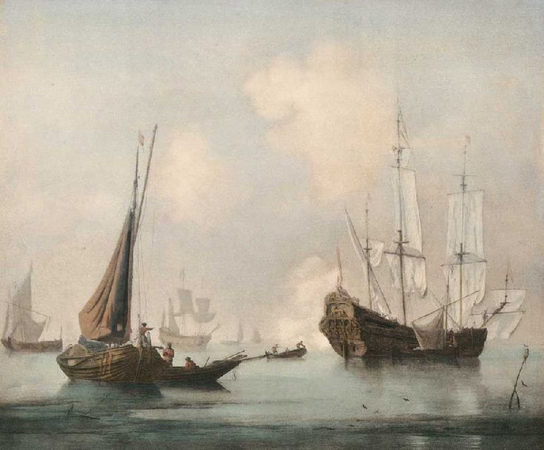(This post is a continuation of Renegade Corsair Captains: the Tale of Simon Dancer – Part 1. If you haven’t done so already, it’s best to read that post before continuing on here.)
Simon Dancer planned his new life as a retired ex-pirate carefully.
First, he managed to arrange for a pardon from the French King, Henry IV.
Having secretly negotiating this pardon, Dancer—who was still in Algiers—bought three ships that had been brought into the harbor there as corsair prizes. Dancer acted as if he were merely purchasing them as an investment. At a given signal, however, the Muslim crews of these ships were killed outright, tossed overboard, or taken captive. Dancer’s new fleet of four ships then sailed out of the Algiers harbor, taking with them to freedom a large number of European slaves, the merchandise the ships contained, and two cannons Dancer had ‘borrowed’ from the Pasha of Algiers. Some versions of the story claim that, on his way to Marseilles to take up his pardon, Dancer captured one of the great Spanish galleons and came away with treasure worth half a million pieces of eight.
His arrival at Marseille created quite a stir, since he came sailing grandly in at the head of a flotilla of four ships heavily laden with a huge mass of booty, a crowd of liberated slaves, and gangs of Muslim captives.
As an ex-pirate, Dancer was—not surprisingly—a notorious figure, respected and admired by some, loathed by others. He made the pilgrimage to Paris and met there with King Henry IV, giving his majesty a generous gift of treasure (to ensure the permanency of his pardon). He spread his money around in Marseilles, too, trying to buy allies. He still had to employ bodyguards all the time he was there, though.
The stories about him are not clear, but presumably he chose Marseilles as his new home so that he could return to his French wife. Whatever the case, he spent five years there in relative peace.
It did not last.
Dancer had too valuable a skill set to let him retire, and the French authorities decided to employ him in their dealings with the Ottoman Regencies. First he played a role in an expedition to Algiers. Some years later, he was sent to Tunis as part of a mission to negotiate the ransom of French captives there.
At first, things in Tunis went well. The Dey of Tunis himself came out to the ship Dancer was using—an extraordinary gesture of courtesy—and the two men spent a pleasant afternoon together, so pleasant that the Dey invited Dancer to his palace the next day. Dancer accepted. The following morning, he came ashore accompanied by twelve men—his usual contingent of bodyguards—and marched to the Dey’s palace. As he approached the entrance gate, an honor guard of janissary soldiers opened the doors for him and ushered him through.
And then slammed the doors shut before the bodyguards could follow.
It turned out that Dancer’s absconding from Algiers and taking the French King’s pardon had made him enemies—implacable enemies—not only in Algiers itself but across North Africa. He was brought before the Dey of Tunis in chains and beheaded on the spot.
And that was the end—sudden and messy—of Simon Dancer.
Ironically enough, it was the two cannons he had taken out of Algiers that formed Dancer’s most lasting legacy in the Muslim world. Year after year, the Algerian authorities irately demanded their return. Finally, as one of the prerequisites to signing a treaty with the French, the Algerians succeeded in repatriating their guns.
For years, the Algiers authorities proudly displayed the two cannons on the Mole, the breakwater that formed the Algiers harbor, as an example of the might of Algiers and of how the Dali Rais, the Devil Captain, had been brought low.
Such was the life of a pirate.
 The Travels of Reverend Ólafur Egilsson
The Travels of Reverend Ólafur Egilsson
The story of the Barbary corsair raid on Iceland in 1627
Amazon listing